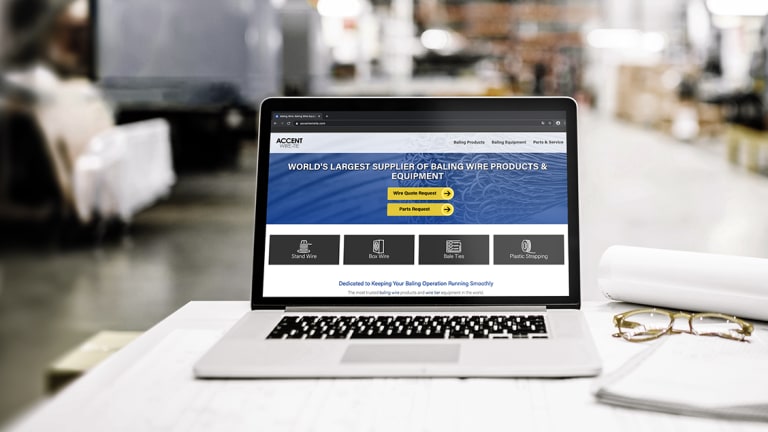The internet has changed how businesses connect with their audience. Now, manufacturers can approach their customers directly through multiple channels. The direct-to-consumer business model has challenges, but a fresh mindset and the right technology are the ideal starting point for establishing a solid position in the digital marketplace.
What is D2C?
Direct-to-consumer (D2C) is a business model where companies produce and sell their products or services directly to end consumers skipping traditional middlemen like wholesalers, retailers, or distributors. D2C brands interact directly with customers, managing everything from product design and manufacturing to marketing, sales, and customer support by themselves. This approach shortens the supply chain, allowing brands to have more control over their products and customer relationships.
Who can benefit most from the D2C business model?
- Emerging brands and startups – It’s a cost-effective way to enter the market
- Established brands seeking digital transformation – If the business goes well offline, it’s time to conquer the digital world
- Brands wanting to expand globally – With a multilingual website, you don’t need to establish a distribution network abroad
- Manufacturing, B2B, and consumer goods sectors – Industries relying on distributors can engage customers directly
Six benefits of D2C
The direct-to-consumer (D2C) business model offers several benefits for businesses, which contribute to its growing popularity.
1. Better control over your branding
The D2C business model gives you a powerful tool to shape your brand identity. You get to control how your brand looks, what it says, and how customers experience it. This means you can directly share your brand's values and identity with people who buy your products. It's like talking to customers face-to-face.
This personal touch helps build trust and loyalty. Plus, it makes it easier to keep up with what customers want, so you can stay fresh and succeed in the fast-changing world of business.
2. Ownership of customer data
When you go the direct route with your customers, you also get a special bonus: they share their data with you rather than your business partners. That means you can build direct connections with your buyers, learn about who they are, how they shop, and what they like about your products.
Then, you can use this treasure to make your marketing more personal, tailoring it to what each customer really cares about. It's a win-win – you get to know your customers better, and they get a shopping experience that feels just right for them.
3. Higher profit margins
Skipping the middlemen like wholesalers and retailers might mean bigger profits for you because you get to keep the full retail price of your products for yourself.
Of course, you have to take care of marketing, distribution, and customer care, but these are needed to some extent even to create and maintain the distribution network. That extra cash in your pocket can help your business grow and thrive. So, going straight to your customers not only makes things simpler but also boosts your revenue.
4. Product customization and personalization
Armed with your customer data, you can tailor your products and services better to your customers. Personalization can set you apart from the competition and make your brand more appealing to consumers.
Your website can have a product configurator, custom solution calculator and other interactive features that help your customers feel you understand their needs and preferences.
5. Loyal customers
The direct relationship between your brand and customers can foster a deeper personal connection. This becomes particularly effective when you craft personalized content, offer loyalty programs, and engage with customers through social channels. Getting to know the faces behind your products can transform a brand from being just a convenient choice into a love brand.
6. Easier international expansion
Going global becomes a smoother journey because you don’t need to rely so much on complex distribution networks. Companies that adopted the D2C model create multilingual websites and reach consumers worldwide through online shopping.
This approach simplifies your way to foreign markets and allows you to build strong relationships with international customers through localized content.
The challenge of selling directly to consumers
All its advantages aside, starting with D2C can be difficult. It requires a change of mindset and solid resources for marketing, distribution, and customer care. But the fact that it’s a challenge doesn’t mean it’s impossible!
If you decide to skip the distributors, you need to take relationships with your customers into your own hands. Think about marketing and sales as a dialogue with customers.
People will buy your amazing products if they find you and especially if they see a reason to buy from you and not someone else. Your brand needs to be unique, visible and easy to love. And that's where a fine-tuned website, digital marketing strategy, and online communication with your customers can make a big difference. Digital technologies can be the perfect allies.
How technology can help you get started with D2C
The D2C model is dependent on online presentation and communication. You can use a well-designed website to showcase your products and make it easy for customers to find you online.
Digital marketing strategies, such as social media advertising and email marketing, can help you reach a wider audience and attract potential buyers. Additionally, online communication tools, like chatbots or email, can enhance customer care and provide customers with quick responses.
Wow your customers with outstanding digital experiences
Building direct relationships with customers means investing in exceptional digital experiences. In an era where consumers are overwhelmed with choices and information, you gain a major competitive advantage if you manage to captivate and engage them through digital channels. Satisfying experiences across websites, mobile apps, and social media draw customers to your brand and make them come back.
A user-friendly interface, intuitive navigation, and relevant content are the foundation. If you use digital marketing features, such as email marketing to nurture contacts and data analytics to predict consumer preferences, you can anticipate the needs of your audience and react more effectively.
Do more with less
You don’t need a giant technology stack operated by a big team of marketers and developers to provide outstanding digital experiences for your customers. The best digital experience platforms have tools for content management and digital marketing under one roof and use a low-code approach empowering non-technical teams to work independently.
Low-code platforms provide a visual interface with drag-and-drop components and pre-built functions. That means that users can assemble applications by connecting pre-existing modules and workflows. These platforms still require some level of coding but significantly reduce the amount of manual coding required while still being flexible and customizable.
With such a digital experience platform, you can create a new template for a landing page, use it in a campaign, collect customer contacts and send them a special offer by email without any coding.
Collect customer data
Knowing more about your customers helps you better tailor your digital communication. You can track customer behavior on your website to see which pages your users visited, which products they viewed, and resources they downloaded. This shows you what your customers are interested in and which other products and services they might like. And if you give them a good enough reason, they might be willing to share their email addresses with you.
You can also collect customer data from social media and independent review platforms by monitoring customer feedback, interactions, and conversations. This can provide insights into customer sentiment, preferences, and behavior.
Create a community portal for access to exclusive content
Creating a password-protected area for loyal customers will give them a feeling of exclusivity. After logging in, your customers can access their account information, community content, early product releases, exclusive services or product instructions.
You can create a community portal, where your customers can exchange experiences and at the same time, you gain another communication channel and a source of feedback. Such an approach contributes to building even stronger relationships with your customers.
Nurture your leads with email marketing
Email marketing is a great tool for D2C businesses. It helps you reach customers in a cost-effective way and send them personalized messages, eventually leading to more direct sales.
Email also keeps your brand in customers' minds, which encourages them to buy from you again. You can send regular newsletters recommending seasonal products, informing people about new items and offering special discounts. Plus, you can use data from email campaigns to make your marketing even better.
Reach your audience where they need you
Some customers prefer searching in Google, others ask friends on social networks for recommendations. Focusing on multichannel marketing will make it easy for them to find you in the right place at the right time. If you create multichannel digital experiences, your customers will remember your brand better and they will connect with you in their preferred way.
When working with multiple channels, store your content in a single place of truth. This will save you time duplicating content and ensure your communication is consistent across all channels. If you use a digital experience platform with a built-in content hub, you’ll be able to create content just once and use it anywhere.
Expand your business abroad
When you create marketing materials in multiple languages, you open the door to new markets and customers who may not be proficient in your primary language. If you create a multilingual website, you can reach a wider audience in your country and abroad. It shows that you care about them and respect their culture, which again improves your relationship with the customers, builds trust and loyalty.
Get inspired by these D2C companies
Subscribe to the Kentico Xperience newsletter
You'll receive our newsletter once a month with all the updates you need to know to keep you in the loop with the Kentico Xperience community. Just the hits—guaranteed.





